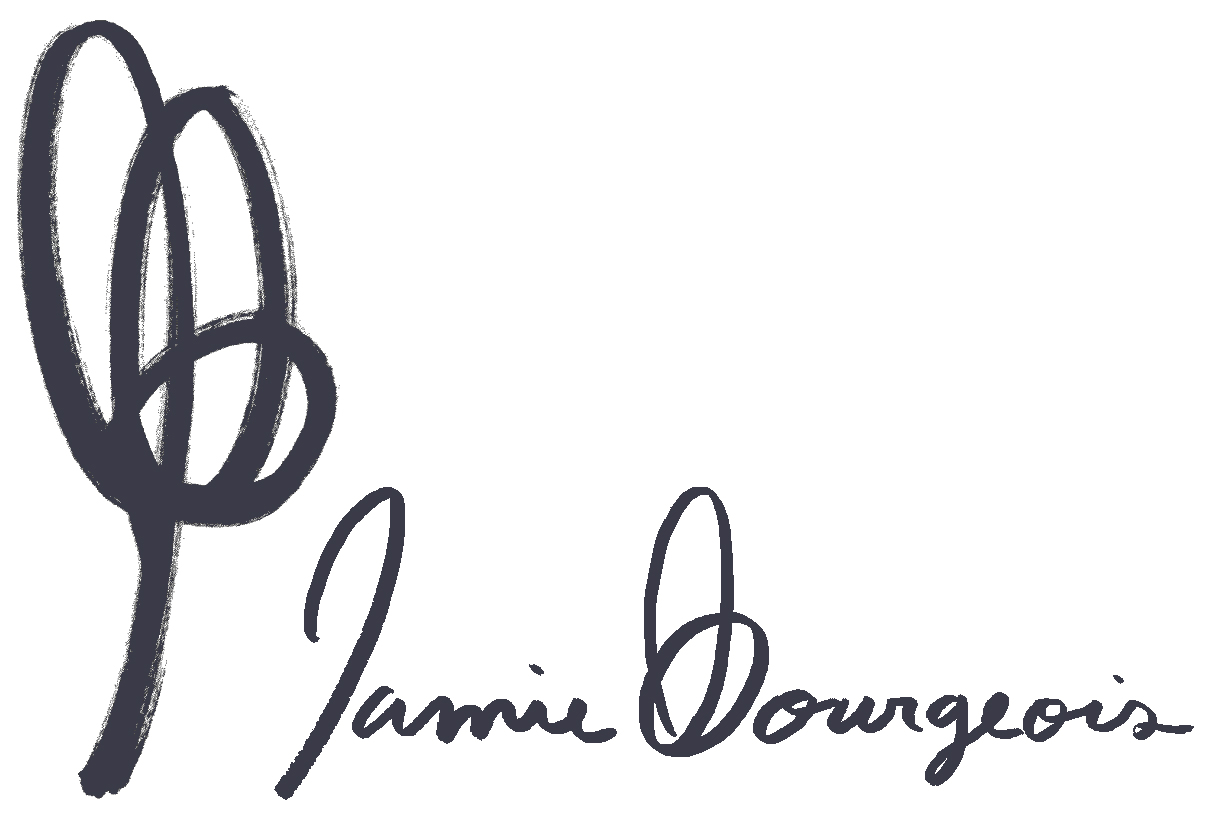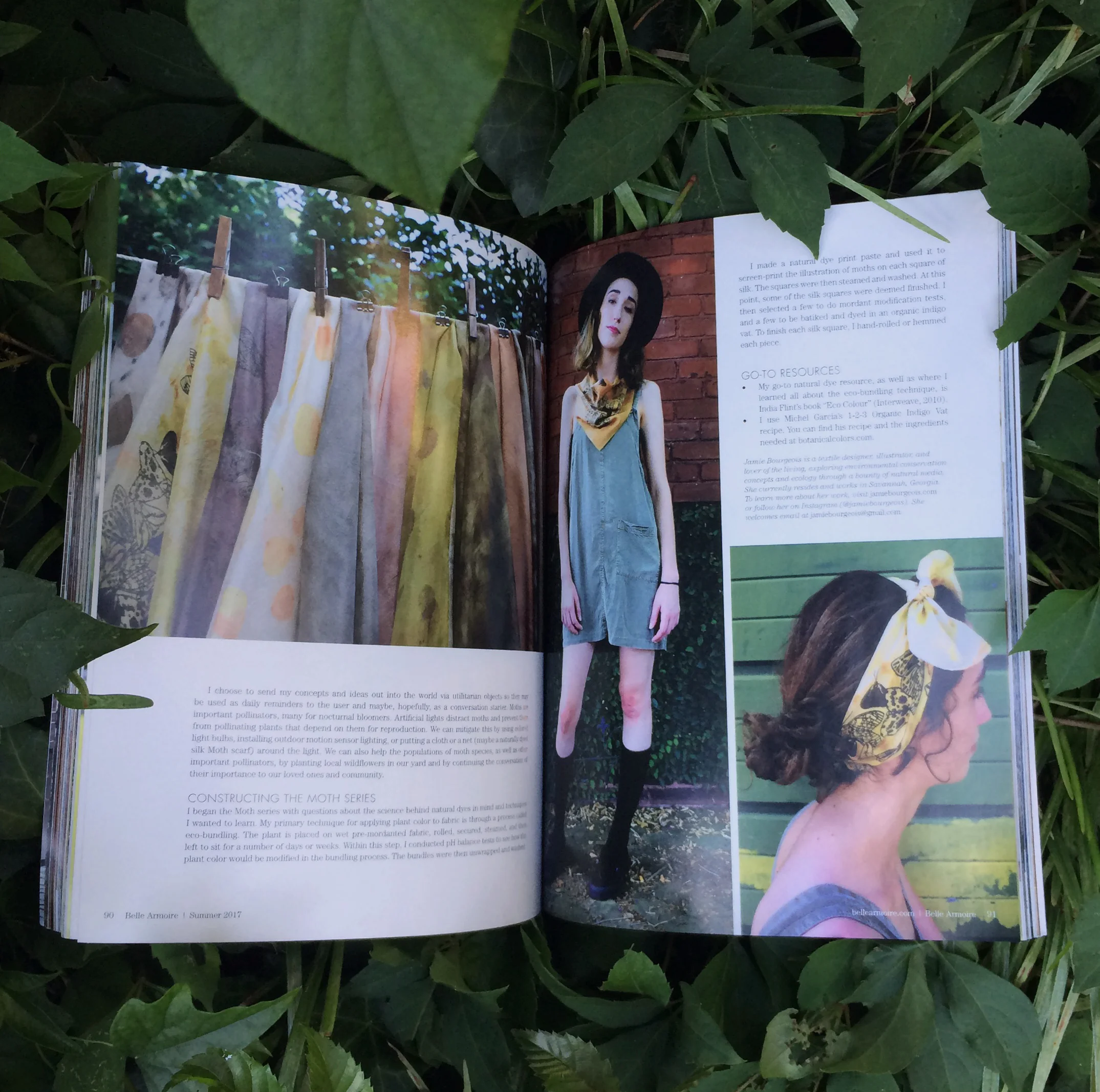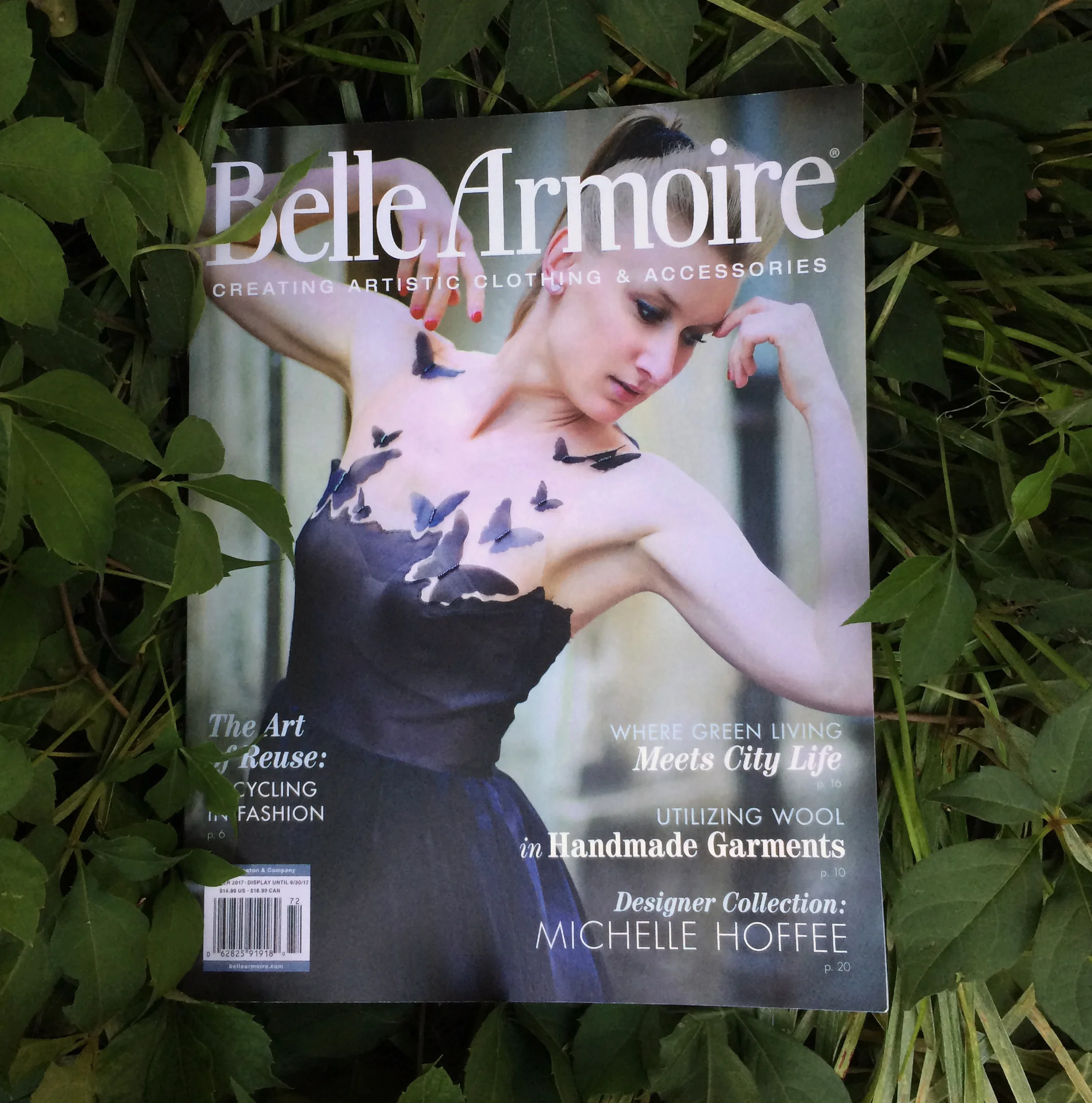The Moth Series scarves have been featured in the Summer issue of Bell Armoire! Get yourself a copy and check out the many many other talented makers featured in this issue!
Moths Matter
The Moth series scarves were born out of a curiosity and passion for the exploration of the natural dye process. They also represent an integral part of the manifesto of my work, which reflects a central belief that the earth is a living organism upon which every living entity depends on every other living entity for its survival; a concept of no singular species holding the most importance, humans included. The more familiar a person is with something, the more knowledge they gain of it and the more value they place on it, meaning the more fervently they may fight to protect it. Through my illustrations of non-human organisms — moths, in the case of these scarves — I’m hoping to plant the seeds of familiarity, knowledge, and value for less appreciated species, in order to preserve and strengthen the delicate balance of their ecosystems. We can’t positively identify the complete effects a particular species has on its surroundings until it is no longer there. With that being said, I strive for my concepts and art-making practices to be congruous with one another. Through my dedication to translating my illustrations onto natural fibers by harnessing the powers of plant color, I am able to make sure that my practices are as low-impact as possible. I utilize plants from my immediate area by collecting food scraps, harvesting leaves, flowers, nuts, and berries from the local landscape, and growing plants I know to be good dye material. In order to put less waste into the world, every scrap of material I purchase is used in some way. I am constantly researching materials and techniques to ensure that I am developing work using the most ethical goods and processes with the least amount of environmental impact. I believe that the process is just as important as the concept, which is as important as the final product.
I choose to send my concepts and ideas out into the world via utilitarian objects so they may be used as daily reminders to the user and maybe, hopefully, as a conversation starter. Moths are important pollinators, many for nocturnal bloomers. Artificial lights distract moths and prevent them from pollinating plants that depend on them for reproduction. We can mitigate this by using colored light bulbs, installing outdoor motion sensor lighting, or putting a cloth or a net (maybe a naturally dyed silk Moth scarf) around the light. We can also help the populations of moth species, as well as other important pollinators, by planting local wildflowers in our yards and by continuing the conversation of their importance with our loved ones and community.
Constructing the Moth Series
I began the Moth series with questions about the science behind natural dyes in mind and techniques I wanted to learn. My primary technique for applying plant color to fabric is through a process called eco-bundling. The plant is placed on wet pre-mordanted fabric, rolled, secured, steamed, and then left to sit for a number of days or weeks. Within this step, I conducted pH balance tests to see how the plant color would be modified in the bundling process. The bundles were then unwrapped and washed. I made a natural dye print paste and used it to screen-print the illustration of moths on each square of silk. The squares were then steamed and washed. At this point, some of the silk squares were deemed finished. I then selected a few to do mordant modification tests, and a few to be batiked and dyed in an organic indigo vat. To finish each silk square, I hand-rolled or hemmed each piece.
My lovely model, Olivia Rose, is also a wonderful photographer. Click here to check out her work!



